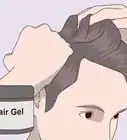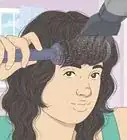This article was co-authored by Jenny Tran. Jenny Tran is a Hair Stylist and the Founder of JT Hair Lab by Jenny Tran based in the Dallas, Texas metro area. With over seven years of professional hair styling experience, Jenny specializes in hair coloring, haircutting, and hair extensions. JT Hair Lab is an authorized carrier of R+Co and of Milbon and is committed to using products with quality ingredients.
There are 9 references cited in this article, which can be found at the bottom of the page.
This article has been viewed 191,008 times.
Styling your hair can be tough sometimes, especially if you have oily, frizzy, or otherwise unmanageable hair. But by training your hair, you can cut back your time spent brushing and staring in the mirror. Working with your hair a little bit each day can teach your hair to do what you want it to do in the long term. Within a few weeks, your hair will be much healthier and easier to style!
Steps
Training Oily or Greasy Hair
-
1Wash your hair with a clarifying shampoo 1-2 times a week. Clarifying shampoos are best for nourishing oily hair and getting rid of any buildup. Apply a coin-sized amount of shampoo to your hair and massage it into your hair from the scalp to the tips, then rinse it under running water.[1]
- If possible, start shampooing only every other day. Everyone's hair type will need a different level of moisture. The more moisture you need, the longer in between shampooing. Eventually, your body will recognize it no longer needs to produce an excessive amount of oil to hydrate your scalp, making your hair less greasy.
Use a shampoo only once every 3-4 days to prevent it from stripping your hair of natural oils, which can make your hair overcompensate and produce too much oil.
-
2Massage conditioner into the ends of your hair daily. In the shower, lean over and lightly squeeze out some water. Use your fingers to lightly comb a coin-sized amount of conditioner through the tips of your hair. Leave it in for a few minutes, then rinse it out with cool running water.
- Cool water will seal the cuticles of your hair, making your hair look much shinier.
Advertisement -
3Apply dry shampoo to your hair on days where you don't shampoo it. Dry shampoo is a useful way to freshen your hair without shampooing it, as the powdery finish will help absorb the oil. Spray a light layer of dry shampoo around your roots and gently massage it in with your fingers until you no longer see its residue on your hair.[2]
-
4Brush your hair twice a day with a bristle brush to spread its natural oils. Brush your hair after you wake up and before you go to bed, working your way from the scalp to the ends. Using a bristle brush nourishes your hair by distributing your hair's natural oils and preventing greasy buildup on your scalp.[3]
- Only brush your hair when it is dry. Brushing it when it's wet causes breakages.
- Bristle brushes are ideal because they help distribute your hair's oils evenly.
-
5Use an apple cider vinegar rinse on your hair 1-2 times per week. Wet your hair with warm water and pour a coin-sized amount of apple vinegar in your hair. Work it through your roots and scalp, than rinse it out under warm water.[4]
- Apple cider vinegar restores your hair's natural pH balance and prevents greasy buildup without stripping away your hair's natural oils.
- Apply the apple cider vinegar rinse 1 day before you shampoo your hair.
-
6Avoid touching your hair whenever possible. Touching your hair imparts oils and dirt from your hands onto your hair, which weighs it down and can set back your hair training progress. If you feel like touching your hair, stop yourself and use a brush or comb instead.
Training Cowlicks
-
1Wet your cowlick under running water. The best way to manipulate a cowlick is to get it wet first. Get it wet under running water, then part it down or to the side of your head. Brush your hair with a fine-toothed comb, spritzing your hair's roots if they dry while doing so.
-
2Blow dry your cowlick. Hold the blow dryer a few inches away from your hair and dry your hair completely, moving your hair in the direction you want it to go. Avoid towel drying, as this can muss up your hair and worsen any existing cowlicks.[5]
- Air drying can also worsen existing cowlicks and prevent them from staying flat.
-
3Clip your cowlick flat to your head. Once your cowlick has dried, use a clip or bobby pin to secure your cowlick down. If your cowlick still has trouble staying down, use a gel, strong-hold hairspray, or pomade to flatten it while you're still training it.
- While sleeping, take out your clip and wear a sleeping cap to keep your cowlick in place.[6]
-
4Repeat this process daily. As you blow dry and clip your cowlick down every day, your cowlick should flatten and stay in place over time. If your cowlick resists your training, try using more clips or use hair gel to bridge the gap.
Training Frizzy Hair
-
1Skip shampooing your hair 2 times a week. This is called co-washing. Twice a week, apply conditioner and rinse your hair without using shampoo. Shampooing too much can strip your hair of its natural oils, which can help weigh your hair down and prevent frizzing.[7]
- Co-washing is ideal for people with curly hair, as it will moisturize their curls and reduce frizz.
- Protein conditioners are ideal, as they help combat frizz and boost your hair's shine.[8]
- Never skip conditioning your hair, as it hydrates your hair follicles and helps manage frizz.
-
2Comb your hair instead of brushing it. Brushing your hair dry can cause breakages and damage your hair cuticles, which can worsen existing frizz. Use a fine-toothed comb or your fingers to detangle your hair, preferably while it is still wet.[9]
If you use your fingers while your hair's still dry, wet them with water or an anti-frizz product to moisturize your hair.
-
3Moisturize your hair with a weekly hot oil treatment. Hot oil treatments can hydrate dry hair and prevent cuticle damage. Apply the hot oil to your hair from the scalp to the roots and let it sit for 30 minutes. After a half-hour has passed, wash it out under warm water.[10]
- Choose a hot oil treatment with jojoba oil, which is especially effective for strengthening hair cuticles.
- You can also schedule professional hot oil treatments at a hair salon.
-
4Avoid blow dryers and other heated hair products. Heat can damage your hair's cuticles and worsen any frizz, so air dry your hair instead of using a blow dryer. Try not to use straighteners or curling irons as well, especially on days where your hair already looks frizzy.[11]
- If you want to use a straightener or curling iron, apply a heat protectant to your hair first. You can buy heat protectants at most hair salons or beauty stores.
- Don't towel dry your hair as well, as the friction from rubbing a towel against your hair can cause frizzing. If you like towel drying your hair, use a microfiber towel, which will absorb water without causing frizz.
Expert Q&A
Did you know you can get expert answers for this article?
Unlock expert answers by supporting wikiHow
-
QuestionIs it possible to train your hair?
 Laura MartinLaura Martin is a Licensed Cosmetologist in Georgia. She has been a hair stylist since 2007 and a cosmetology teacher since 2013.
Laura MartinLaura Martin is a Licensed Cosmetologist in Georgia. She has been a hair stylist since 2007 and a cosmetology teacher since 2013.
Licensed Cosmetologist
-
QuestionHow do I make my hair look less greasy without washing it?
 Laura MartinLaura Martin is a Licensed Cosmetologist in Georgia. She has been a hair stylist since 2007 and a cosmetology teacher since 2013.
Laura MartinLaura Martin is a Licensed Cosmetologist in Georgia. She has been a hair stylist since 2007 and a cosmetology teacher since 2013.
Licensed Cosmetologist
-
QuestionHow do you make your hair less oily?
 Laura MartinLaura Martin is a Licensed Cosmetologist in Georgia. She has been a hair stylist since 2007 and a cosmetology teacher since 2013.
Laura MartinLaura Martin is a Licensed Cosmetologist in Georgia. She has been a hair stylist since 2007 and a cosmetology teacher since 2013.
Licensed Cosmetologist
Warnings
- Fighting your natural hair type can train it, but you can also damage your hair and make it more difficult to work with later. If you have naturally curly hair, try styling it instead of training it.⧼thumbs_response⧽
References
- ↑ https://www.southernliving.com/fashion-beauty/hairstyles/how-get-rid-oily-hair
- ↑ http://www.byrdie.co.uk/train-greasy-hair/
- ↑ https://www.beautybay.com/edited/how-to-prevent-greasy-hair/
- ↑ http://www.byrdie.co.uk/train-greasy-hair/
- ↑ https://www.gq.com/story/how-to-fix-a-cowlick
- ↑ https://www.harpersbazaar.com/beauty/hair/advice/a3315/how-to-fix-cowlicks/
- ↑ https://www.cosmopolitan.com/style-beauty/beauty/how-to/a33187/how-to-defrizz-your-hair/
- ↑ https://www.webmd.com/beauty/features/how-to-tame-frizzy-hair
- ↑ https://www.webmd.com/beauty/features/how-to-tame-frizzy-hair#1
About This Article
To train oily or greasy hair, try to only wash your hair 3-4 times a week since washing it too frequently can strip it of natural oils and cause your scalp to overcompensate. On days when you don't wash your hair, apply dry shampoo if your hair feels oily or greasy. You can also massage a dime-sized amount of apple cider vinegar into your hair when it's wet once or twice a week to restore your hair's pH and eliminate greasy build up. For more tips from our Cosmetology co-author, like how to train cowlicks, scroll down!
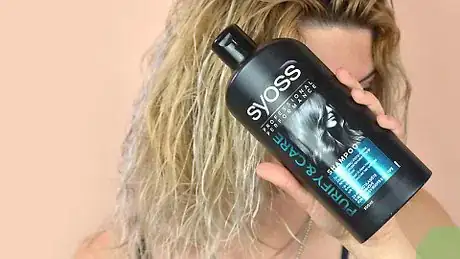
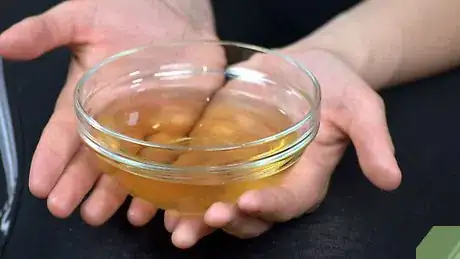
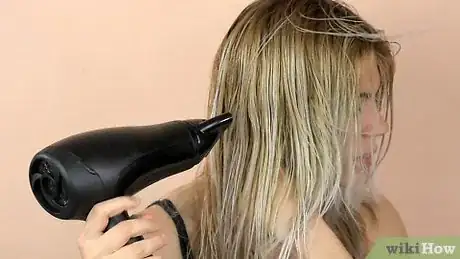



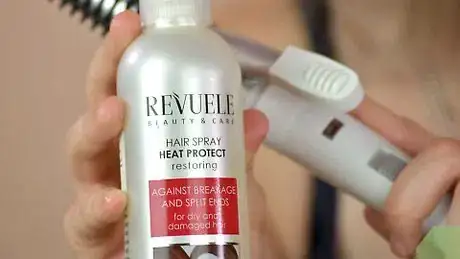
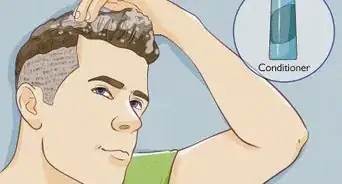
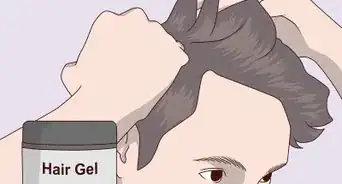
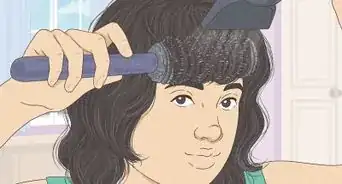

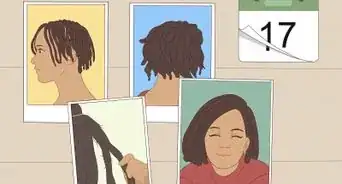
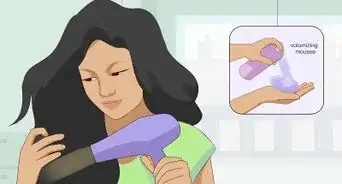

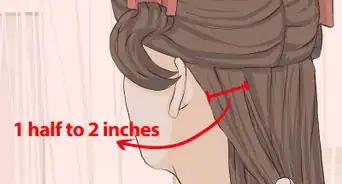
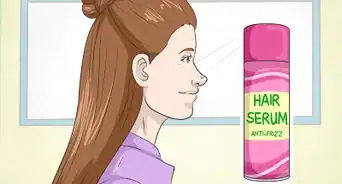
-Step-15.webp)








